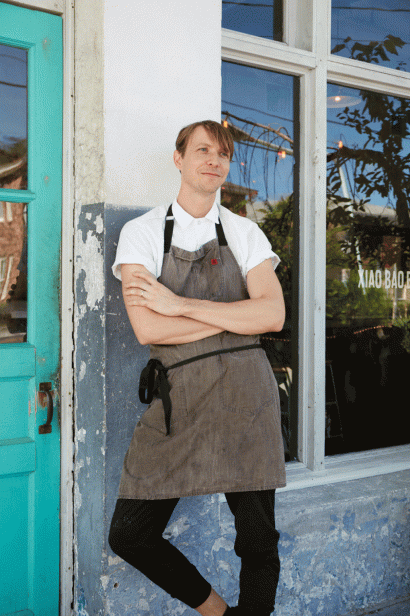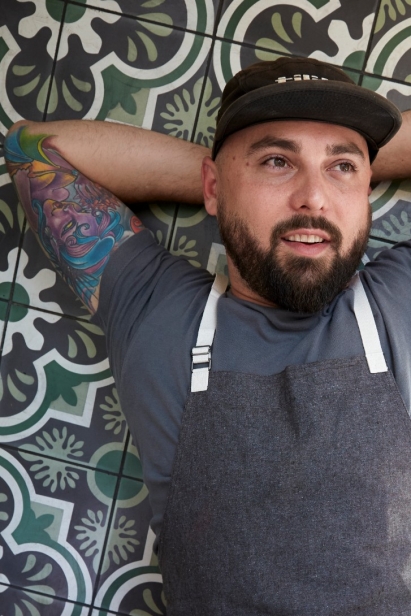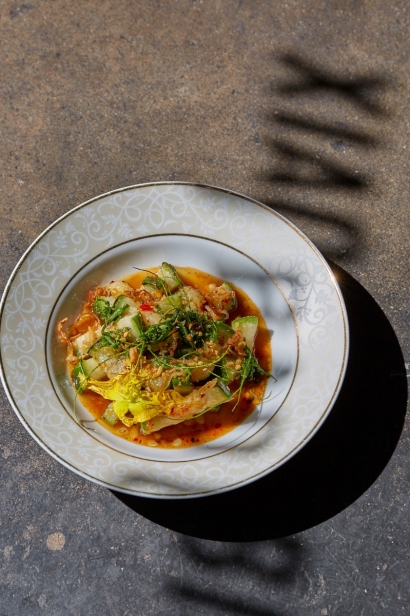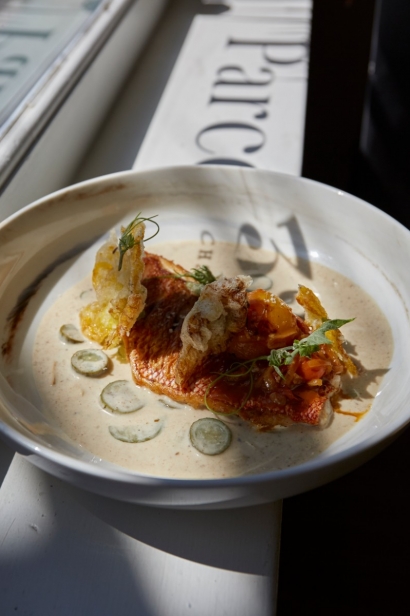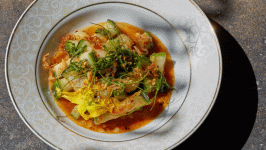Silky Smooth
Very few of us know that luffa, as we know it in its sponge-like form, comes from a plant. It is not derived from some squishy sea creature or pulled from the depths of the ocean in inconsiderate fashion or unsustainable numbers. The luffa plant is a beautiful and prolific vine in the cucumber family. Yes, luffa or loofah, is a PLANT.
Pause. Catch your breath. Find your cat and snuggle. It blew my mind, too.
When I first came to Charleston, I was introduced to a 20-foot-tall vine hanging on a tower of bamboo, flashing its buttery flowers in the sunlight, while its forest-green fruit lumbered in the shadows.
“Luffa is totally the next big thing,” I proclaimed, in which my colleague responded chidingly, “‘yeah, sure buddy.’”
Challenge accepted—I acquired some blue-black luffa seeds, making a life commitment to proving my point. It was two years before I began growing them en masse. In the meantime, I was lauding luffa to those who would listen, searching for believers, and a chef or two innovative enough to make it happen.
Luffa just so happens to be a delicious and nutritious culinary crop; it is a gourd, after all. It is popular in East and Southeast Asia, where the crop originates.
Known by many names including silk squash, and in Hindi as gilki turai squash, as a sub-tropical plant it grows smashingly well in the Lowcountry. With a 180- to-200-day growth cycle, it begins fruiting in July, when zucchini and squash are petering out and people are tiring of okra. The blossoms and tendril tips are also delicious. Plus, you just can’t kill the stuff.
I decided to make it my mission encourage the culinary community of the Lowcountry to find a home on the menu for luffa. I had some early experimentation with Queen Street Hospitality Group’s Chef de Tournant Mike Harvey, who came looking for it as the central component in a vegan dish featured at Greenville’s Euphoria food festival.
I also crossed paths with Charleston chef and entrepreneur Matt Lee, of The Lee Brothers. He not only confirmed it being “a zucchini-like experience with spongier flesh,” but he offered some non-traditional options:
“If I were a pastry chef, I would probably explore ways to get it to soak up chocolate and rum, etc... I would [also] experiment with turning the denser, more slippery ones, into ramen noodles.”
I began to wonder who else would be interested in taking this to the next level. I identified chefs who had farm-to-table ethics, were innovative and embraced the cuisine where luffa thrived. I immediately targeted Josh Walker, chef-co-owner of Xiao Bao Biscuit and Tu, because of his focus on Asian cuisine.
“I love big bold flavors, funk and spice. And I’ve always liked underrepresented things. We try to show a different side of Asian food at Xiao Bao,” Walker said. Perfect.
Walker is continually expanding and embracing new ideas, challenging himself.
“I like to take things and modify them based on local ingredients or a certain creative idea. Focusing on unique foods and working with farmers and fishermen who do things the right way is super important to me,” he said. “I like that food is always evolving and it’s important for me, as an artist, to do something unique and not always traditional. Moving things forward is critical for me.”
I wondered if this crop could make its way in to a kitchen that is outside the Asian style. I was introduced to Chef Shaun Brian Sells of Parcel 32, who is interested in re-imagination of classic cuisine and the integration of Caribbean flavors. He appreciates knowing his ingredients and purveyors, given his history as chef at the only “island-to-table” restaurant in St. John, Virgin Islands; he brings it all seamlessly together.
“I’ve always done this, I’ve always been into my environment. It started in the Virgin Islands in St. John and Coral Bay,” where he grew up in a modest environment and embraced the bounty of the land. “I grew up foraging on the way to school. But, whenever I would go out to eat I would want the best of the best.”
After bouncing to the mainland and back, and some experience in the industry on St. John, he settled on attending Johnson and Wales for some formal training.
“I went to school with a really good head start,” he said.
I had Sells meet me at the farm. We sampled blossoms and gourds and he picked enough to experiment with.
“Holy sweet one, this one is like full-blossom flower,” Sells said as we navigated the jungle-like rows of luffa vines.
“I think what we’re doing right now is trying to test things and [develop] unique crops, which is huge for the future. To be able to see this at different stages that maybe you, the farmer, see through your farmer eyes all the time, is important. It’s not about the fact that I’m a chef. Everyone who walks through my kitchen, I think that I can learn something from them. And by thinking that way, I learn something.”
Sells said, however, luffa would not be an instant crowd pleaser.
“You put white truffle or bacon on something and people turn into seagulls. That’s too easy.”
I could tell that he understood this delicate process, and that it would take creativity beyond a traditional Punjabi-style dish on a menu.
“I try to bring diners into it slowly” he said. “It’s not entirely about paying homage. It is also about bettering myself as a cook every day. “
Gilki turai squash may not find its way into the vernacular of the culinary scene in Charleston as soon as I would like, however. The slow integration is a gastronomic example of how we, as a culture and people, are learning and being inspired by each other, growing together and thinking innovatively and intently about how that takes place. Chefs like Walker and Sells are embracing the full-spectrum approach to their craft, recognizing quality in all aspects of the process including Old World techniques, agriculture, environmentalism, culture and more. Ultimately, the sum of the parts results in some tantalizing and thought-provoking food that you should absolutely venture to experience.



